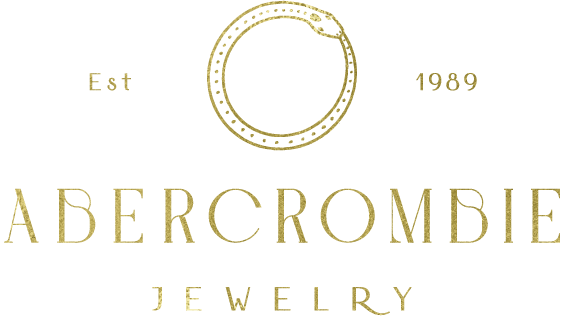Are you looking for a way to tell if the jewelry is a real diamond? With so many fake diamonds on the market, it’s essential to identify genuine gemstones.
By reading this article, you will understand what makes up a genuine diamond and learn valuable methods for authenticating jewelry yourself. So let’s get started by exploring how color and clarity can help determine if you have real diamond jewelry.
Identifying Real Diamonds: Assessing The 4Cs And Knowing The Telltale Signs.
Assessing the 4Cs—cut, color, clarity, and carat weight—is one of the most reliable methods for determining if a diamond is real. Cut will determine how much light reflects off the stone, while color ranges from near-colorless to tinted yellow or brown. Clarity grades range from flawless (FL) to included (I3), with each grade having characteristics that can help you identify a real diamond. Lastly, carat weight measures the size of a diamond and is an essential factor in pricing; it’s also easy to measure on any scale.
Knowing telltale signs can also be helpful when trying to distinguish between genuine diamonds and imitations. Real diamonds tend to have symmetrical facets in shape and placement; they should look like well-defined triangles when viewed through magnification, such as a loupe or microscope. Other signs include looking at how light moves across the stone’s surface: A real diamond will reflect white light evenly across all sides, while fake stones may appear duller or darker in certain areas due to their lower quality cut and polish surfaces.
The last step is examining imitations and synthetics up close. Imitation diamonds typically have more flaws than natural ones because they are made with cheaper materials like glass or cubic zirconia, which don’t contain carbon atoms like natural diamonds. Synthetic diamonds may look similar but lack certain features associated with naturally occurring ones, such as fluorescence under UV light – this means that if you shine ultraviolet rays onto your gemstone, it won’t emit any visible glow if it’s not an authentic diamond! With these steps taken into consideration, you’ll be able to spot fake gems without too much difficulty, so you can ensure your jewelry collection contains only high-quality pieces.
Spotting Fake Diamonds: Examining Imitations And Synthetics
Spotting fake diamonds is a difficult task, but it’s not impossible. With the proper knowledge and tools, anyone can tell if their diamond jewelry is real or an imitation.
The first step in assessing whether or not a diamond is real is to examine its 4Cs: Cut, Clarity, Color, and Carat Weight. These characteristics must be met for the diamond to be considered genuine. You may have a fake on your hands if they are off-standard. Additionally, certain telltale signs indicate when a piece might not be what it appears.
Another way to identify count diamonds is by looking at synthetics versus simulants – two types of imitations commonly used in jewelry pieces today. Synthetic diamonds are man-made stones with identical physical properties to natural ones, while simulants only look like genuine gems from afar but lack chemical similarities upon closer inspection. Knowing how each type differs will help you make an informed decision about your purchase, so don’t forget to research!
By carefully examining the 4Cs and synthetic/simulant options before buying anything, you’ll have all the information necessary for making an educated choice on whether or not your diamond jewelry is real – weighing benefits, costs, and risks included.
Making An Informed Decision: Weighing Benefits, Costs, And Risks
When buying jewelry, it’s essential to know what you’re getting. Buying a real diamond can last for generations and maintain its value over time. Some risks are associated with purchasing diamonds and other precious stones. It’s crucial to weigh the benefits, costs, and risks of buying real diamond jewelry.
The first thing to consider is the cost of purchasing a real diamond versus something made from synthetic or simulated materials. Synthetic diamonds may look just as good as natural ones, but they won’t hold their value like natural stones. Additionally, many sellers charge much more for genuine gems than similar ones that are not diamonds or even close in quality; this could lead to buyers paying too much for something that is not worth nearly as much as expected.
Next is evaluating whether the stone has been certified by a reputable organization such as GIA (Gemological Institute of America). This certification guarantees the authenticity and assures frauds who try to pass off lab-grown stones or simulants at prices meant for mined gemstones. The certificate also evaluates color grade, clarity grade, and cut grade, which all contribute towards setting price points accordingly when reselling later on down the line.
Finally, another factor to consider is resale potential should one decide they no longer want the item; to determine this potential, one needs information about where it was purchased from initially, along with any accompanying paperwork verifying its origins and authenticity upon purchase.
Knowing these details helps avoid being taken advantage of when trying to resell either through private parties or through jewelers, who might offer less than full market value due to a lack of documents proving provenance. All these factors require careful consideration to decide whether buying authentic diamond jewelry is the right choice, given personal circumstances.
In summary, identifying real diamonds can be a daunting task. When assessing a diamond’s authenticity, it is essential to consider the 4Cs of quality – Cut, Clarity, Color, and Carat Weight. Additionally, knowing the telltale signs of fakes or synthetics can help you make an informed decision about your purchase.
If you are looking for authentic diamonds, only buy from trusted sources with clear return policies—and don’t be afraid to ask questions! With adequate information and careful consideration, you should have no trouble finding genuine diamonds that will last a lifetime (or even longer).
